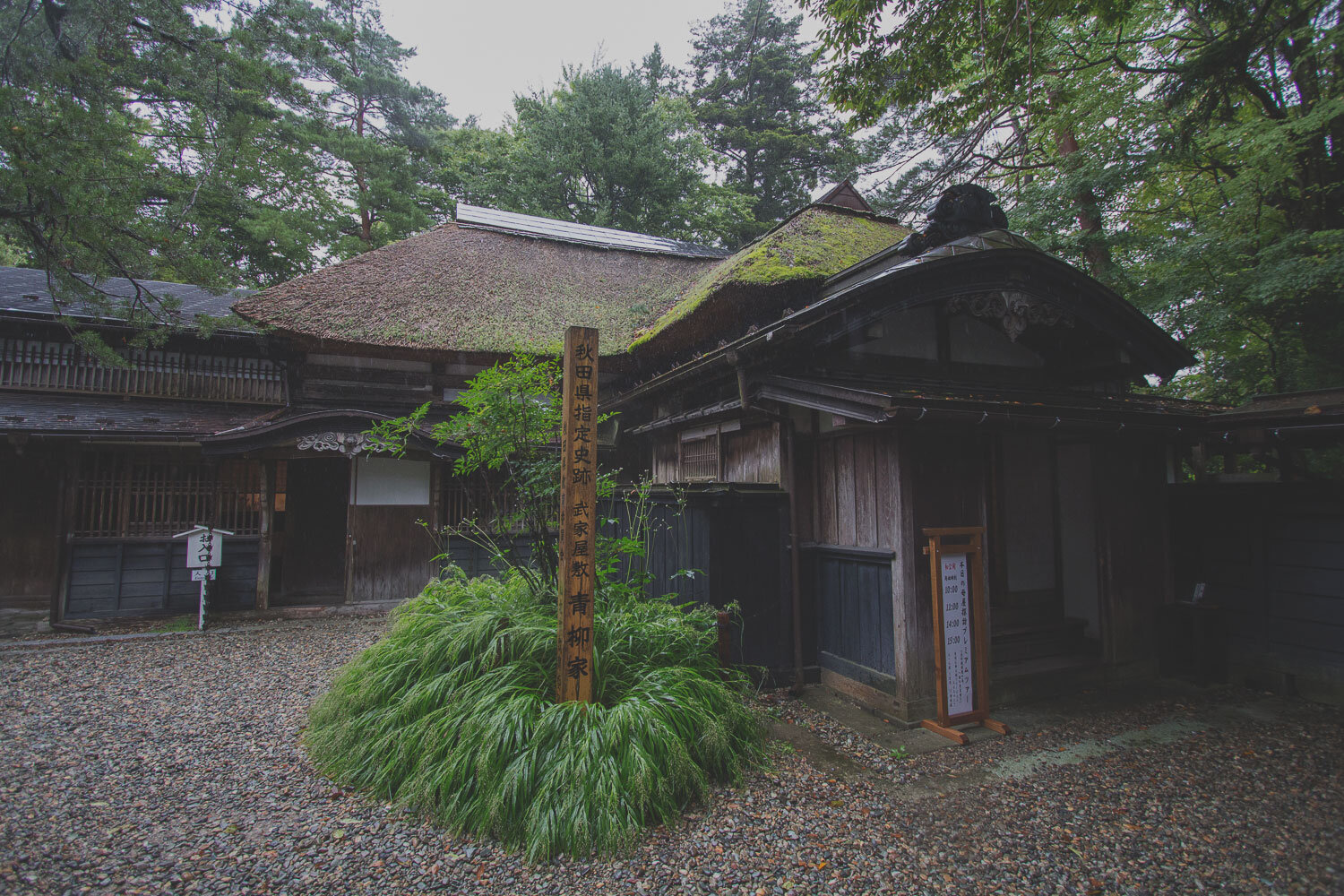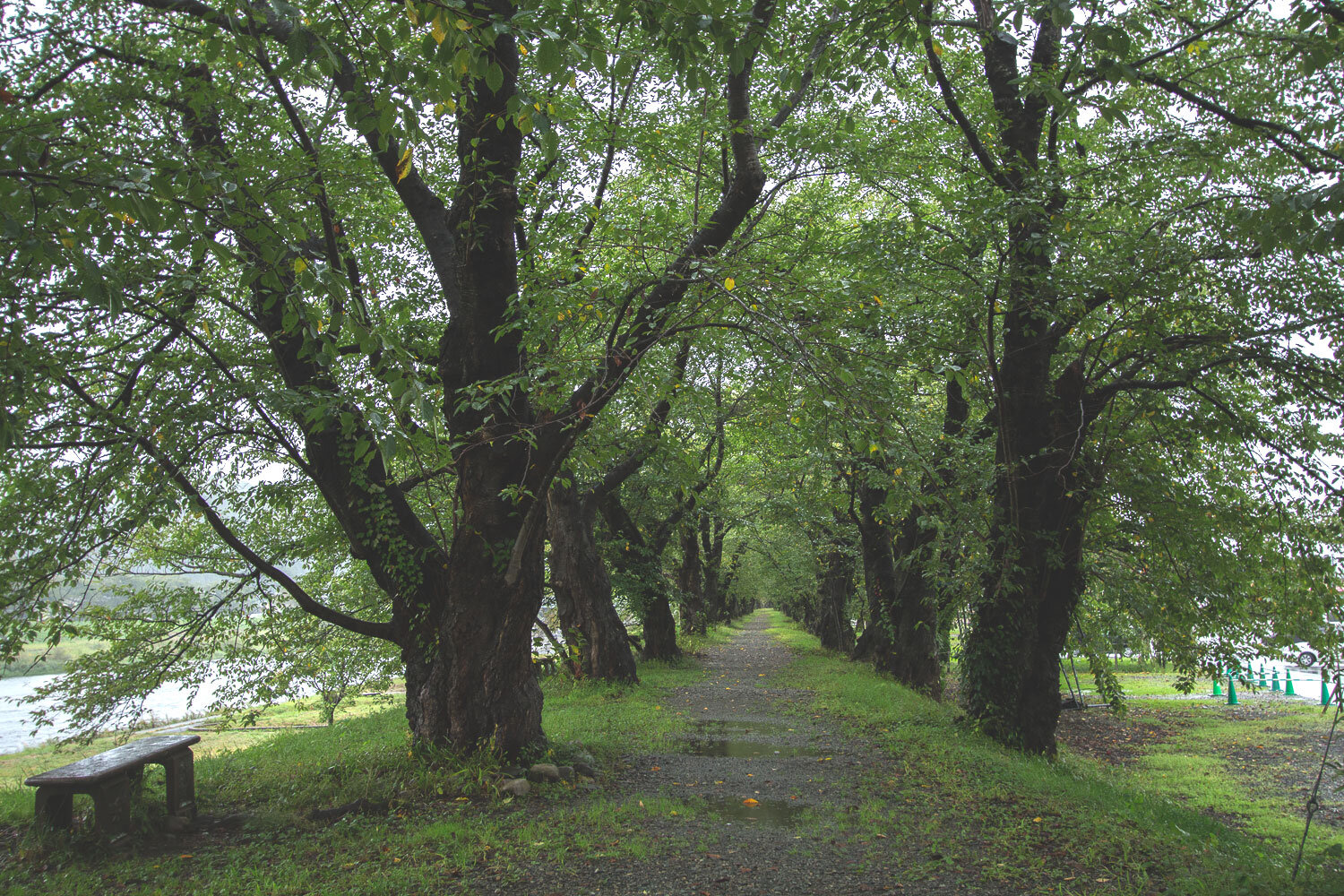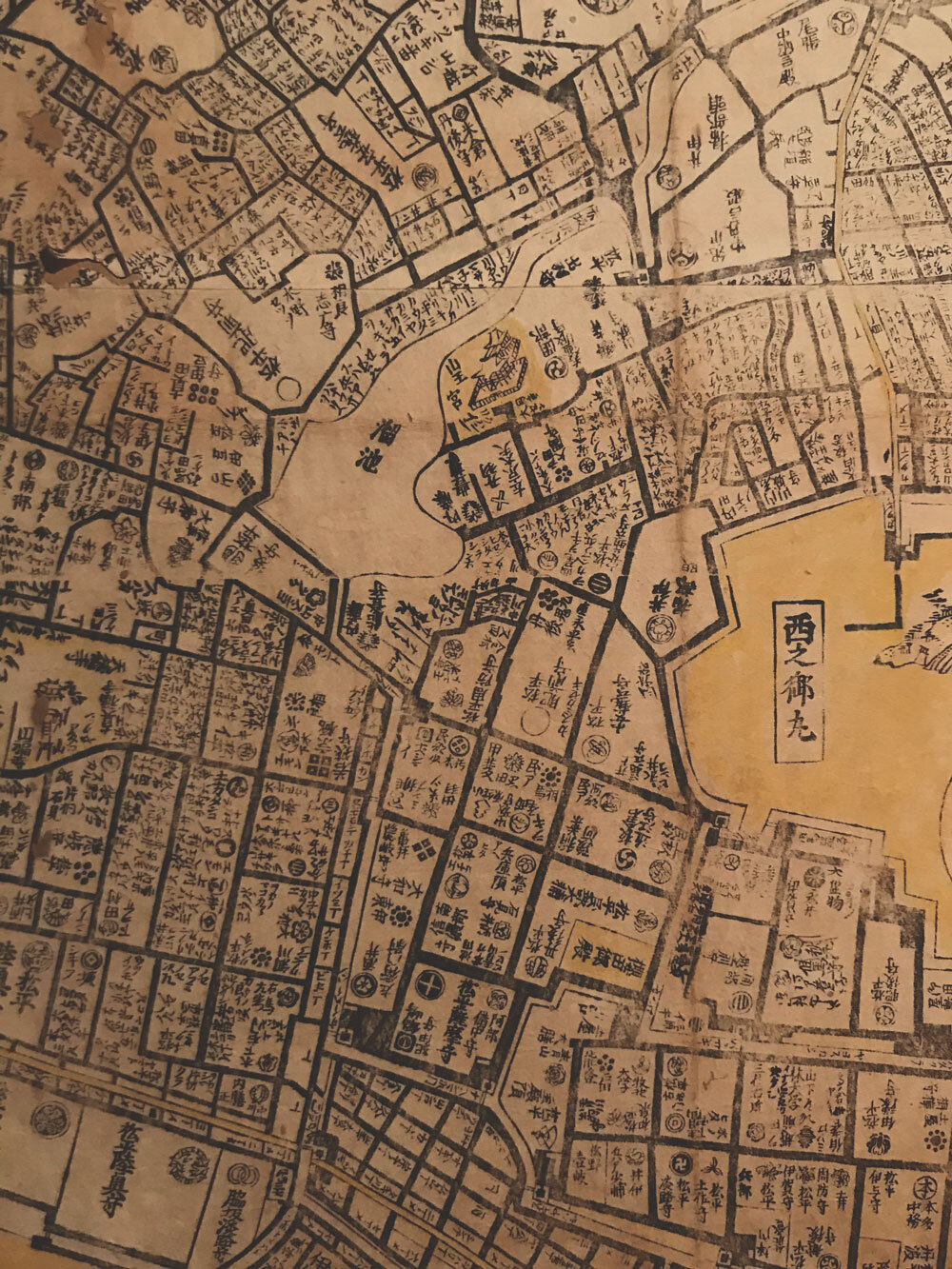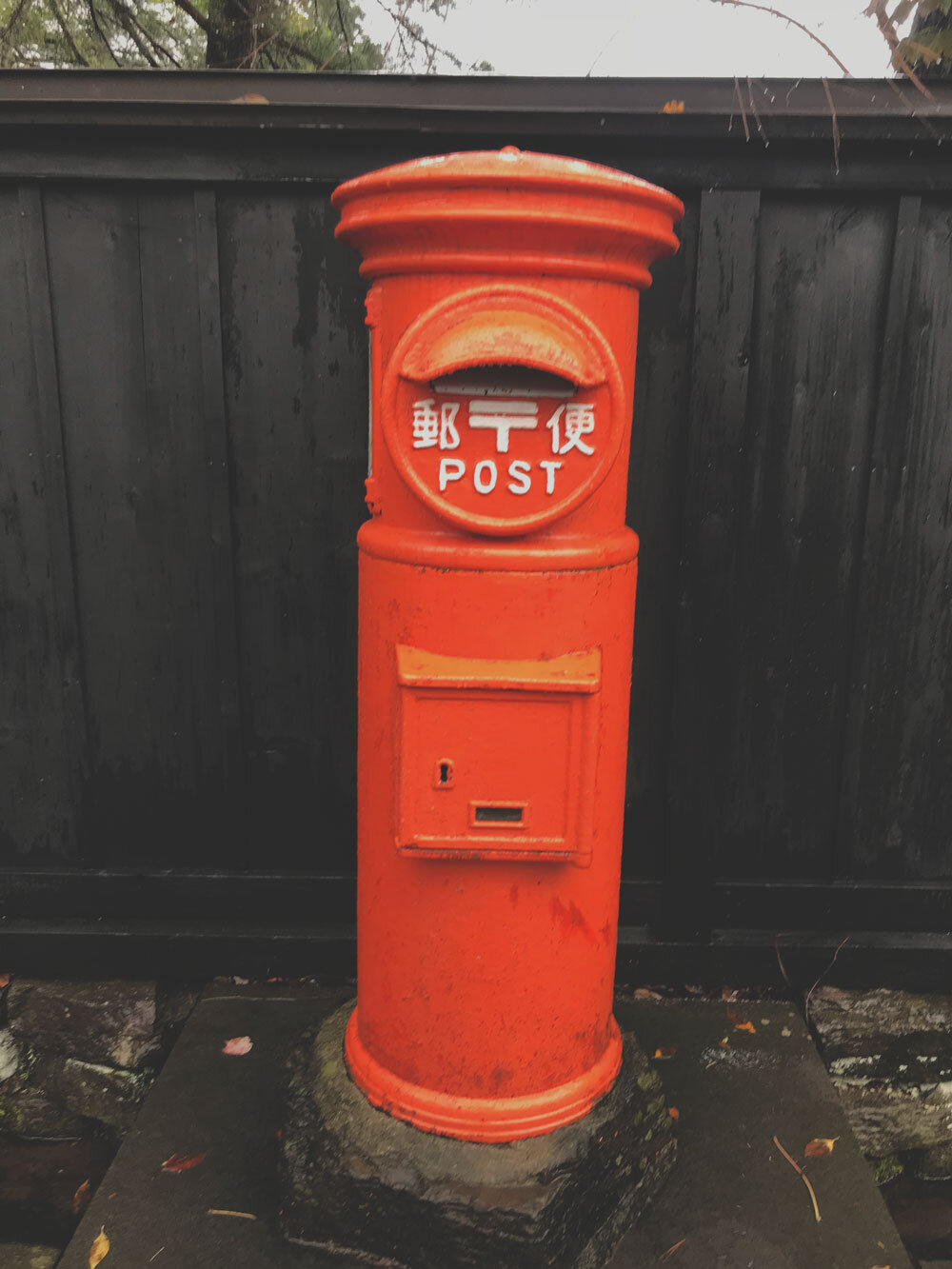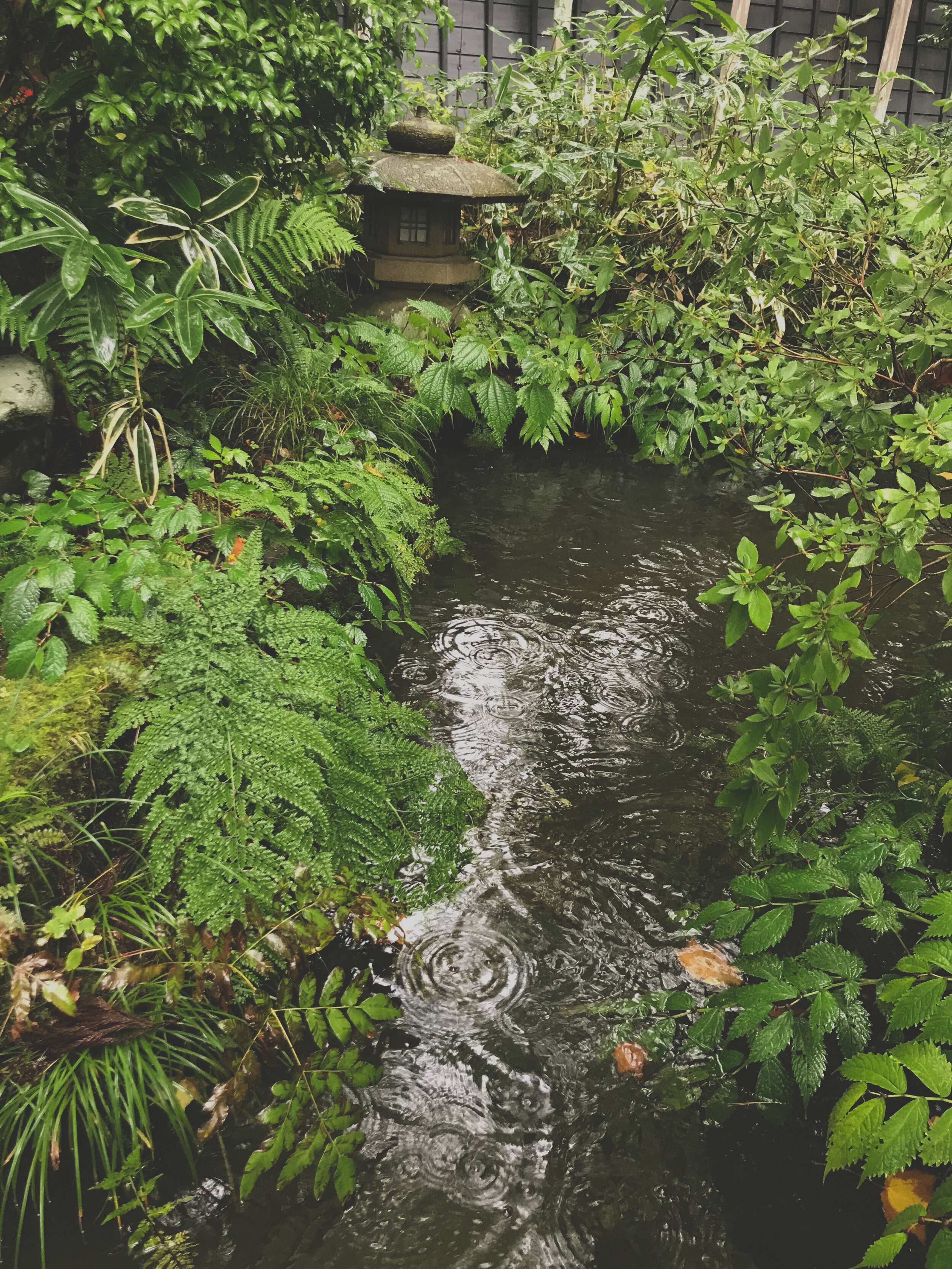Getting lost in Kakunodate’s Samurai Village
The Shinkansen pulled away with a lurch from the station at 6:00 am. The sky was a deep purple, and the sun hadn’t yet peeked over the horizon. The streets were mostly vacant, except for a few businessmen on bicycles venturing to work; their bike lights glided in the dark like spirits.
As the train picked up speed, I pulled out a small red bag of chocolate I purchased on the platform. I tore the corner and shared some with Jeremy. He had already discovered our chairs could recline and was settling into his aisle seat. He looked at me with exhaustion on his face but eagerness in his eyes. We were ready for a change of pace. The neon signs and cramped spaces of Tokyo, combined with the mental strain of always trying to navigate the complex subway systems and unmarked streets, had worn us out and fried our senses.
Our destination was the small northern town of Kakunodate, a historic place in the Akita prefecture. It is home to a samurai village, a well-preserved collection of traditional Japanese houses owned by samurai during the Edo period. The plan was to arrive in the early morning, walk around, and then have lunch before taking another train to Akita for the night.
I watched the window as our scenery changed from high rises and bridges into vast expanses of green and yellow fields divided by narrow gravel roads. Off in the distance, small houses clustered at the edge of dense forests with trees tall and thin like toothpicks. The Shinkansen whizzed on, and the scenery blurred behind rain-streaked glass.
The train arrived three hours later in Kakunodate. We stepped onto the platform, ready to stretch our legs, and quickly stuffed our bags into lockers. With umbrellas in hand, we ventured out into the quiet, puddled streets. The town was virtually empty; not a soul braved the early Sunday morning rain. We passed blocks and blocks of used shoe stores, vending machines, and restaurants — every window dark and closed. The rain picked up as we continued onward, searching for clues of the samurai village.
We checked our rapidly disintegrating tourist map multiple times, its surface now smattered with raindrops and blurry ink. As soon as we thought we were utterly lost in this ghost town, we happened upon a wide lane lined with dark wood fences. Behind them, tall, leafy tree branches reached out as if to invite you inside. Water ran in a deep channel along the sidewalks on both sides of the street. Small concrete bridges marked the fence entrances. We had finally arrived at the samurai village, and we had it all to ourselves.
I walked along the lane, enjoying the peaceful sound of the rain tapping on our umbrellas and water rushing in the channel below. We hopped over puddles and ducked into doorways, admiring the craftsmanship of the old woodworking techniques. We tiptoed through each samurai house, pointing out the subtle differences in floor plans and contemplating each room’s purpose. Their history lingered in the air, old and silent, like dust moving through a beam of sunlight.
We heard voices back on the street and realized we were no longer alone. Small groups of umbrella-wielding tourists led by a guide marched from building to building, snapping pictures.
We spent the next few hours exploring our share of samurai history and perusing local artisan shops. Off in the distance, we heard low repetitive drumming and the clanging of tambourines. As we approached, we saw a group of women performing and beckoning tourists to enter. Jeremy looked longingly but knew that the sound of my stomach growling outweighed his desire to go on another adventure.
The heavy rain does not deter some die-hard tourists looking to explore the samurai village.
We returned back to town, delighted to see a restaurant was now open. We ascended the steps, shaking out our umbrellas before entering. An elderly woman greeted us and motioned us to sit at the western-style tables. She poured us a cup of hot tea and wandered off, waiting for us to call her back to order. I spent 10 minutes struggling to translate the menu with Google Translate before giving up. Jeremy opted for a rice porridge dish, and I pointed to the large photo of Akita-style ramen featured prominently on the bottom. It looked safe enough and sounded perfect on a cold rainy day.
More patrons entered and sat at the Japanese-style tables on the floor. The windows began to steam, and the place once silent was alive with chatter. Our food appeared, and to Jeremy’s surprise, the porridge was precisely what he wanted. I looked down at my dish, expecting to feel steam on my face from the hot ramen, and instead, I found a goopy cold mess.
Cold Akita style Ramen in Kakunodate, Japan
To my dismay, after a bit more Googling, I learned Akita-style ramen is served cold and slimy. Numerous piles of unidentifiable ingredients and textures sat fixed in my goop. I did my best to eat the noodles and tiny mushrooms, leaving behind the goopiest parts. I left feeling unsatisfied with my choice but ultimately glad I tried something new.
After our lunch, we found ourselves back at the platform, ready to venture onward. Our brief stop in Kakunodate felt like hitting pause. We needed a moment of quiet, a moment of peace and history to recharge.




